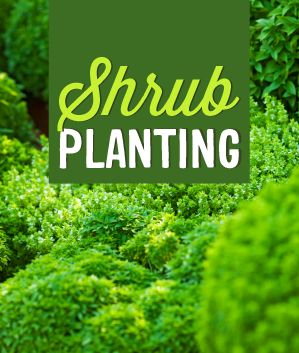New shrubs like to be planted in spring or fall, and most prefer loose, fertile soil that drains well and has a modestly acidic to neutral pH in the 6.0 to 7.0 range. Deciduous shrubs should be planted when dormant, usually in early spring before new leaves emerge or in late fall after old leaves have been shed. To plant container grown shrubs, just follow these simple steps:
Determine soil qualities. If the soil of the planting site is overly acidic or alkaline for the type of shrub you've selected, amend it beforehand by adding lime (to raise the pH of acidic soil) or elemental sulfur (to lower the pH of alkaline soil) as necessary. For tips on amending soil, check out our article: Evaluate & Improve Your Soil.
Dig a hole twice as wide and slightly less deep as the rootball of the shrub, angling the walls of the hole outward toward the top and making sure the bottom of the hole is firm, yet drains well.
Remove the shrub from the container. Inspect the rootball and snip off or pull away any roots that are circled, matted or tangled. Also, trim any dangling root ends to prevent them from becoming bent or tangled when the rootball is placed in the hole.
Place the shrub in the planting hole so that it is centered in the space and stands straight and tall. The top of the rootball should be slightly above the level of the surrounding soil. If it is at or below that level, add some soil to the bottom of the hole and reposition the rootball.
Improve the backfill soil you've dug from the hole by amending with rich, organic materials such as compost or a Premium Garden Soil. If planting in spring, add a complete, slow release fertilizer to the backfill soil. Backfill the planting hole to the level of the top of the rootball, sloping the soil away from the trunk to the level of the surrounding soil.
Create a 2-4 inch lip around the perimeter of the planting hole to act as a catch basin for water.
Fill the collection basin with water until the ground is loose and muddy in order to eliminate air pockets. If the shrub needs to be re-positioned slightly, do so at this time by gently jiggling it into place.
Mulch around the shrub to retain moisture and prevent encroachment by weeds and invasive lawn grasses. Also, water frequently until the shrub has become well established, especially if the foliage shows signs of withering or curling during the heat of the day.









